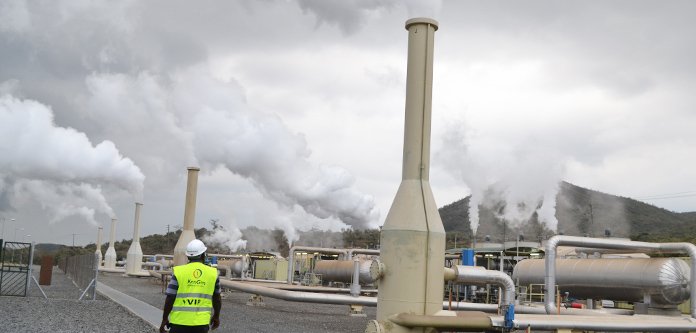Kenya has been ranked top in geothermal power generating capacity in Africa, and ninth globally, according to Renewables Global Status 2018 report released by Renewable Energy Policy Network for the 21st century (REN21).
Kenya emerged top in Africa with 700 megawatts (MW) beating technological heavyweight Japan which has been ranked tenth with an output of 500 MW.
With geothermal generating capacity of 2,500 megawatts, United States of America is top globally followed by the Philippines (1,900 MW), Indonesia (1,800 MW), Turkey (1,100 MW), New Zealand (1000 MW), Mexico (900 MW), Italy (800 MW) and Iceland (750 MW), while the rest of the world share 950 MW.
The only other African country with developed geothermal energy is Ethiopia (7 MW).
According to the government of Kenya, renewable energy accounts for over 70 per cent of Kenya’s installed capacity compared to the world average of 24 per cent.
The Renewables Global Status 2018 report indicates that about 9 million households in Kenya have access to off-grid renewable energy.
READ: Kenya offers geothermal exploration training to African experts
Kenya has several on-going green energy power projects including Lake Turkana Wind Power Plant -the single largest wind power plant in Africa with a power generating capacity of 300 MW, Ol Karia I (70 MW) and Ol Karia V (140 MW).
According to the report, the number of off-grid systems deployed in 2016 outpaced the grid connections achieved by rural electrification agencies and national utility companies in Kenya and Uganda.
The report also highlights growing investments in Kenya’s renewable energy sector including $80 million secured by M-Kopa in 2017, the largest solar deal in Africa that year.
Recently, the government of Kenya launched a USD 47 million (KSh 4.7 billion) facility under the Kenya-Off-Grid Solar Access Project (KOSAP) aimed at spurring the private sector to provide viable solar and clean cooking solutions to about 1.1 million people in marginalized regions.
Geothermal is widely considered a preferable, low-cost renewable energy source due to low emissions when compared to thermal sources, and is also cheaper when used as an alternative to mitigate depressed hydro-power generation caused by drought.
Kenya has a target of 5 gigawatts (GW) geothermal capacity by the year 2030.
